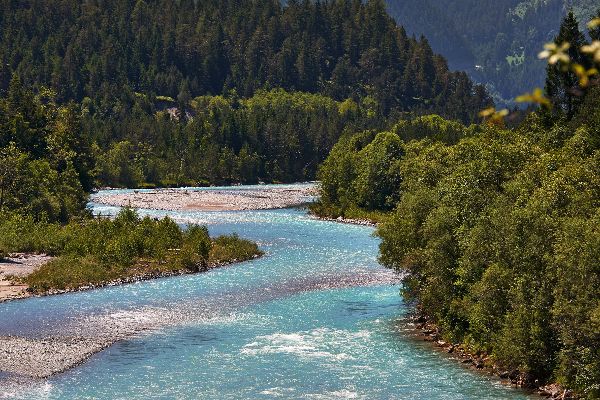Monitoring programme according to the EU-WFD - the framework conditions

The European Water Framework Directive (EU WFD) lays down new requirements for the Water Monitoring Programme.
As early as since 1991 the quality of Austrian rivers and groundwater has been recorded on a federal scale according to standardised criteria laid down by law. The legal basis of which are the Water Rights Act (WRG), the Hydrography Act and the Ordinance on Water Quality Monitoring (WGEV).
However, the European Water Framework Directive (EU WFD) brings about new requirements and thus the water monitoring programme has been adapted with an amendment to of the Water Rights Act (Wasserrechtsgesetz, WRG, 2003) and the Ordinance on the Monitoring of the Quality of Water Bodies (Gewässerzustandsüberwachungsverordnung GZÜV, 2006).
This monitoring has been carried out in Austria for rivers and lakes and it has been destined to fulfil various tasks.
- The monitoring shall provide a general survey of the current status of Austrian waters,
- it shall demonstrate long-term changes,
- it shall verify whether the targeted quality objective of a “good status” has actually not been complied with in a polluted body of water, and
- it shall prove the efficiency of rehabilitation measures.
The first two points are covered by a surveillance monitoring. Representative, i.e. characteristic, measuring sites are continuously monitored by a fixed measuring programme.
The other two tasks are fulfilled by an operative monitoring, which is flexible and aims at monitoring specific types of pollution.
In this context on the one hand those bodies of water are examined which have been assessed within the framework of the status quo analysis as being at risk of missing the goal and/or whose risk could not be clearly assessed to identify the actual status.
On the other hand, also those waters are examined with this programme, where rehabilitation measures are being carried out in order to prove that the required quality objective has been reached.
If a monitoring is necessary for the purpose of investigation, we talk about “investigative monitoring”. It falls within the competence of the Federal Provinces and is carried out if, e.g. the extent and the effects of undesired pollutions have to be identified or the reasons for exceedances are unknown.
Surface waters (rivers and lakes) are nowadays surveyed and assessed in their entirety. Apart from the impacts of material pollution, also hydro-morphological interventions that change the function of waters as habitats are considered in the assessments. The quality of waters is defined via their ecological and chemical status. If water sections have been artificially constructed or e.g. considerably modified due to human utilisation the good ecological status cannot be reached. In this case, we are talking about the ecological potential.
In order to collect the data basis required for the assessment of the ecological and chemical status, the extent of measurements of the already existing programme has been expanded.
The biological monitoring carried out on Austrian running waters so far was usually oriented according to the ecology of animals (small animals = macrozoobenthos) or algae (phytobenthos) on the water bottom. Now also water plants (macrophytes) and fish are being examined.
Changes in the river course, backwater or interruptions in the passability constitute hydro-morphological burdens. Via the composition of small animals, algae, fish and water plants existing in the water it is identified whether a body of water is polluted in this respect or also in material respect.
In the case of groundwater, the good chemical and quantitative status is aimed at For this purpose almost 2000 groundwater measuring sites are sampled up to four times per year. Currently results and analyses of up to 226 chemical and/or physical-chemical parameters are available.
Results on the monitoring programmes are available under the heading Water Quality and Water Protection.